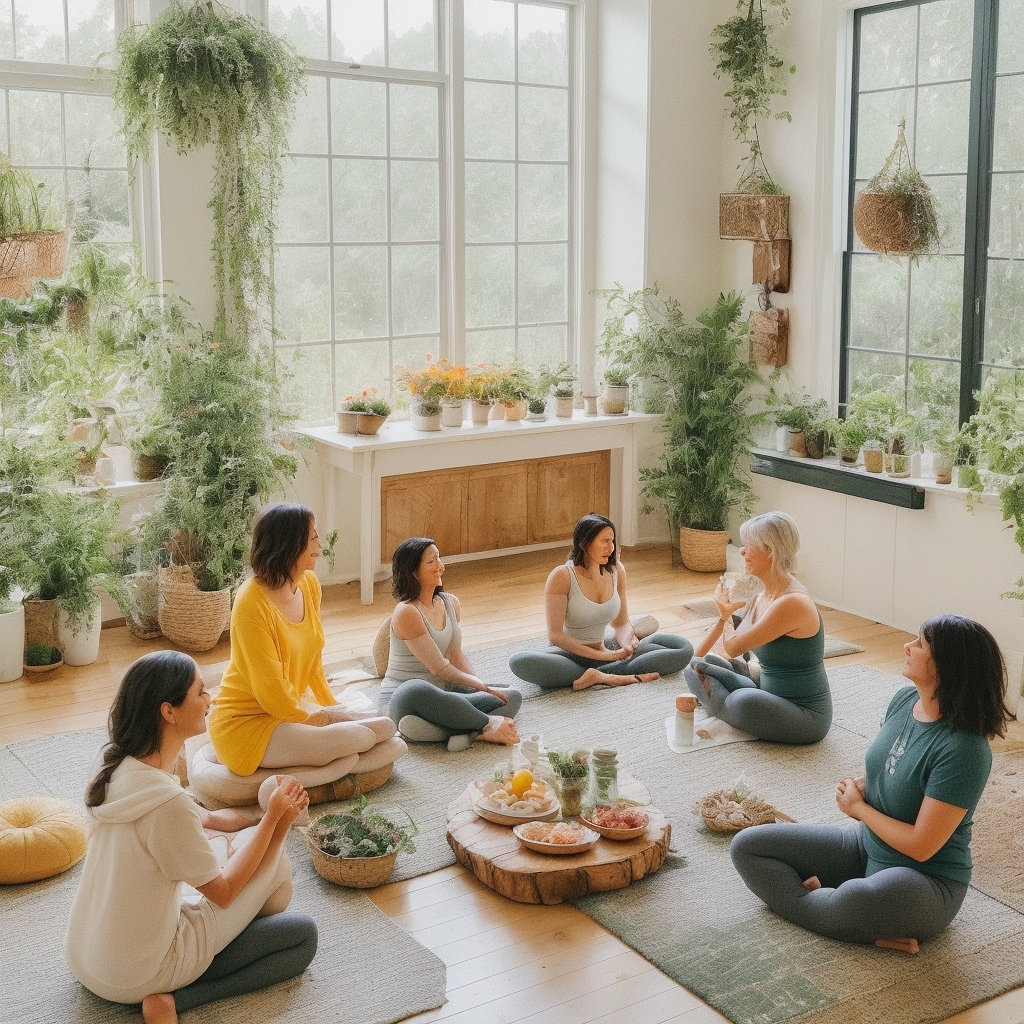Transcription Audio

Essential 2025 Guide: Sustaining Support After a Retreat
13 août 2025
Listen to audio:
Transcript Text
Hello and welcome to today's podcast, where we're diving into a topic that's more relevant than ever as we look toward 2025: how to sustain the benefits of a retreat once you're back in the whirlwind of daily life. Retreats, whether they're centered on yoga, meditation, or even a digital detox, offer an incredible reset. But let’s be honest, the real challenge begins when we step back into our normal routines. So today, I’m going to guide you through some proven strategies to create and maintain a strong support community, which is absolutely essential for long-term well-being. Now, here's something I've observed first-hand after teaching these principles to over 500 professionals: the integration part of a retreat is often frustratingly overlooked. Think about it. You go on this transformative journey, but within three to six weeks of returning home, the benefits can start to fade unless you have a structured support system in place. We’re at a point where relying solely on personal motivation isn't enough anymore. Research in social psychology is clear: your social environment plays a decisive role in keeping those positive changes going. So, what I’m sharing today combines the latest scientific insights with practical strategies that really work. Let's start with the core concept of community support. If you’ve ever felt the power of peer support, you’ll know exactly what I mean. It's all about mutual aid between people who’ve shared similar experiences. And while this idea is gaining traction in places like France, it can be a game-changer for anyone trying to maintain the gains from a wellness retreat. When you think about it, nearly one in five people in France experiences mental health issues, so connecting with peers who understand your struggles can provide deeply authentic support. Studies show that peer support isn't just beneficial for those receiving help, but also for those providing it. In a post-retreat setting, this dynamic becomes even richer. You're not just dealing with similar challenges; you also share this profound understanding of the transformations you went through during your retreat. This is what we call "therapeutic reciprocity," where helping others helps us, creating a virtuous cycle of support that many programs overlook. Moving deeper into this idea, the heart of maintaining a vibrant support community lies in building authentic relationships. Regular meetings, whether in person or virtual, are key. Think themed workshops, discussion groups, or even simple social gatherings. A lot of guides miss this crucial point: the importance of regularity and mutual engagement. Without consistency, even the best intentions can fade away. What truly works is establishing "connection rituals," those recurring moments that everyone looks forward to. Authenticity can't be forced; it needs to be cultivated. It's about creating safe spaces where vulnerability is not only accepted but encouraged. Members should feel free to share their struggles and successes, their setbacks and their progress. This emotional transparency is the fertile ground where lasting relationships grow. I often recommend what I call the "3V rule"—Vulnerability, Veracity, and Validation. Each interaction should allow members to be vulnerable, to speak their truth without judgment, and to feel validated. Let’s talk about technology, which, when used wisely, can really strengthen community bonds. Platforms like WhatsApp for quick chats, Zoom for structured meetings, or Slack for thematic communication, can help maintain contact and organize events. But here's the key: these tools should complement, not replace, face-to-face interactions. The future is a hybrid approach, blending digital and physical interactions for a rich community experience. The best tech tools are those that spark spontaneous engagement and create micro-moments of connection. Imagine a shared meditation app where you can see who else is meditating in real-time, or a collective journal for daily reflections. These innovations create a sense of presence, even when you're apart. A useful tip here is the "70/30 rule"—70% informal, spontaneous interactions, and 30% structured events. This balance keeps people engaged without overwhelming them. Now, for those of you wanting to go deeper, integrating regular rituals that echo the retreat's teachings is crucial. Whether it's weekly guided meditations, monthly group coaching, or shared inspirational readings, these rituals reinforce that sense of belonging and support. Tracking progress through journals or wellness apps can offer valuable feedback, allowing you to tweak activities to maximize their impact. This data-driven approach to wellness helps keep the community experience fresh and effective. An advanced strategy I love is the Concentric Circles Method. Picture your community as a series of circles. The inner circle includes the most active members, around 20%, who naturally become leaders. The middle circle is your regulars, about 60%, and the outer circle includes occasional participants, around 20%. This structure helps manage expectations and responsibilities more subtly. And here’s a community innovation: the Rotating Mentorship System. Implement a system where each member takes turns being both a mentor and a mentee. This quarterly rotation enriches everyone's experience and prevents the relational dynamic from stagnating. It's a revolutionary approach that turns traditional hierarchy on its head, fostering a network of mutual learning. Finally, let’s talk about Collective Sensory Anchoring. Create shared sensory anchors—elements that immediately bring back the retreat experience. It could be the scent of an essential oil during meetings, a particular music playlist, or even a tasting ritual like a specific tea or healthy snack. These anchors trigger emotional memories and strengthen group cohesion in subtle but powerful ways. So, whether you're just coming back from a retreat or planning one soon, remember these strategies. They’re designed to help you sustain those incredible benefits long after you’ve returned to everyday life. Thank you for joining me today. I hope you found these insights helpful and that you're inspired to create a support system that keeps the spirit of your retreat alive. Until next time, take care and stay connected.